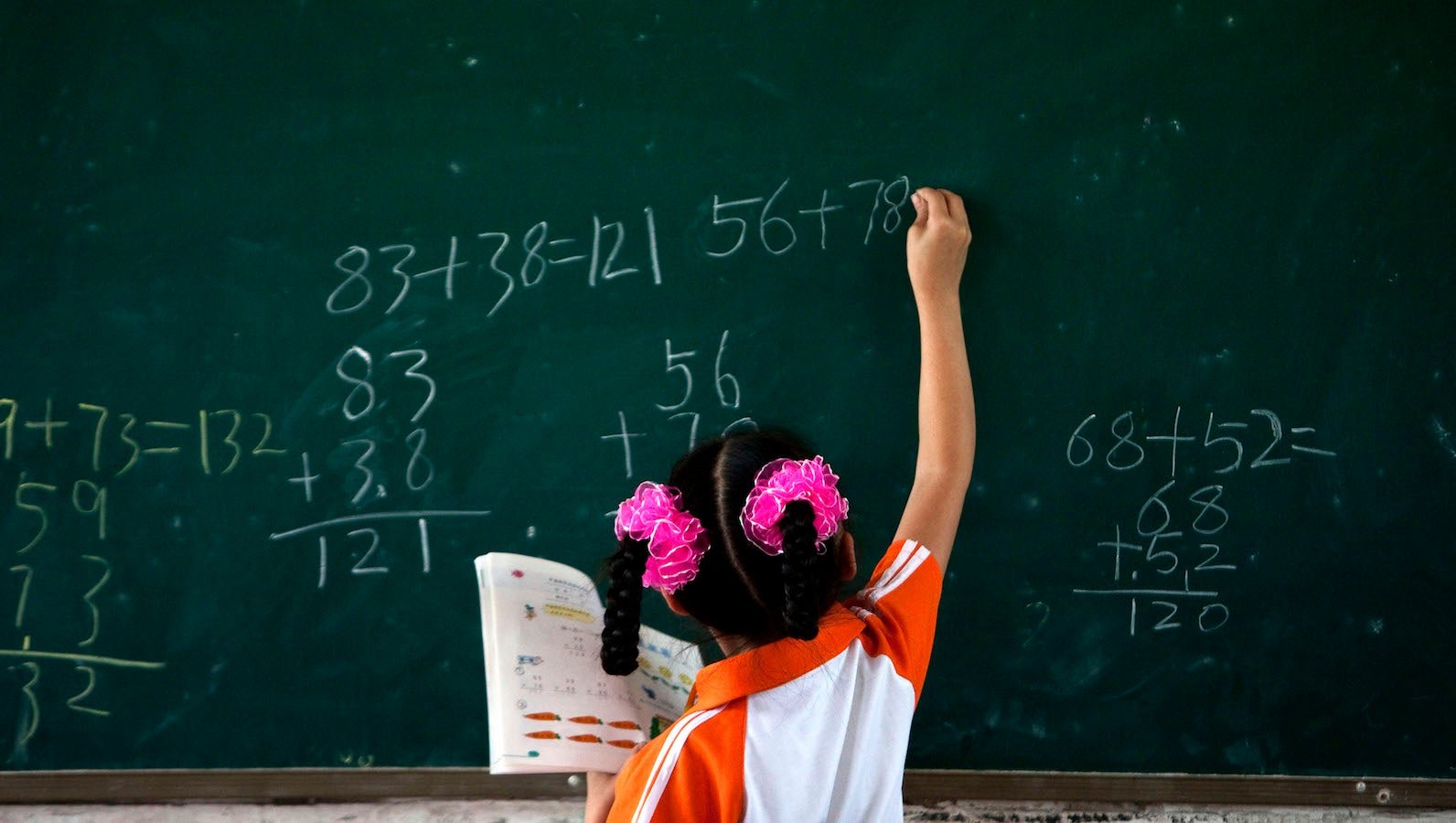The test results that best explain the STEM gender gap are not the math scores
In 1992, Mattel released Teen Talk Barbie, a doll installed with a voice box that allowed it to hold forth on topics like shopping, dream weddings, and whether or not it would be neat to be a lifeguard. None of these subjects exactly screamed “feminist icon.” But the phrase for which the talking Teen Talk Barbie drew the most fire was this: “Math class is tough.”


In 1992, Mattel released Teen Talk Barbie, a doll installed with a voice box that allowed it to hold forth on topics like shopping, dream weddings, and whether or not it would be neat to be a lifeguard. None of these subjects exactly screamed “feminist icon.” But the phrase for which the talking Teen Talk Barbie drew the most fire was this: “Math class is tough.”
Accused of perpetuating the stereotype that girls aren’t good at math, Mattel soon withdrew the phrase from Barbie’s vocabulary. But the stereotype still exists—and often serves as a convenient explanation for the marked gender gap in STEM careers, from former Harvard president Larry Summers’ 2005 comments about how “issues of intrinsic aptitude” could explain the dearth of women in high-level positions in science, to former Google engineer James Damore’s infamous 2017 memo claiming that biological differences “may explain why we don’t see equal representation of women in tech and leadership.”
Research has shown that, to the contrary, it’s the stereotypes themselves—along with factors like test-taking anxiety, social norms, and the discomfiting experience of being a girl in male-dominated environments—that play a role in dissuading girls from pursuing careers in STEM. Now, a new study offers another intriguing explanation: Perhaps there are fewer women in STEM not because girls are worse than boys at math, but because they’re significantly better than boys at reading.
The study, by economists Thomas Breda of the Paris School of Economics and Clotilde Napp of Paris Dauphine University, was published in the journal PNAS. The authors analyzed data on how 300,000 teenagers across 64 countries performed on the math and reading portions of the Programme for International Student Assessment, or PISA, in 2012.
Overall, boys performed marginally better than girls in math, by about 10% of a standard deviation—suggesting only a slight gender gap. But in the portion of the test that asks students about their intentions to pursue math in college and in their careers, a bigger gender gap emerged, at about 22% of a standard deviation. “The gender gap in intentions cannot be explained by differences in math ability across genders,” the researchers argue.
What may explain the dearth of girls and women in STEM, they say, is the fact that the girls outperformed the boys in reading by a wide margin. This gives girls what economists would call a “comparative advantage” in reading—that is, they’re better off focusing on the humanities because it’s an area where they’re a lot more advanced than boys, whereas they’re about equal to boys in math. The study suggests the difference between students’ math and reading abilities may explain up to 80% of the gender gap in students’ future plans about whether to stick with math. (The researchers also are careful to note that socialization, rather than innate ability, is the most likely explanation for both boys’ and girls’ performances in different subject areas.)
As anyone who’s been a teenager can attest, your plans for your course of study and career when you’re 15 years old can be quite different from the actual decisions you make down the line. But the researchers point to another dataset of students in France, which found a strong correlation between students’ intentions to study STEM and their actual enrollment.
So what’s the big takeaway? According to the researchers, the best way to close the gender gap in STEM may be to focus on helping boys improve their reading scores. “As the gender gap in reading performance is much larger than that in math performance, policymakers may want to focus primarily on the reduction of the former,” they write, suggesting the use of dedicated tutoring programs to help students who are low achievers in reading. More boys would then presumably pursue coursework and careers in the humanities, narrowing the gender gap in STEM.
They warn, however, that this could wind up simply reducing the number of students who pursue careers in math overall—not exactly an ideal outcome given that such jobs are in high demand. And so the researchers also recommend efforts to ensure that girls who are talented in both math and reading are made aware that they’ll have more job opportunities and higher earning potential if they choose to go the STEM route.
None of this is meant to suggest that it’s time to do away with campaigns aimed at combating stereotypes about girls and math, Breda and Napp say. Rather, the study is a helpful reminder that when we talk about ways to close the gender gap, we need to pay attention not just to how girls are performing academically, but to how boys are doing, too.